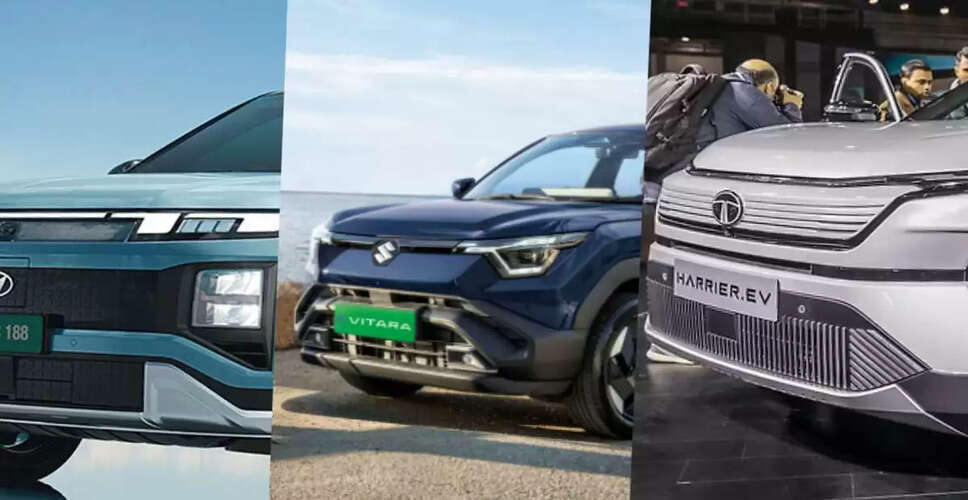Tata Harrier EV: A New Contender in the Electric Vehicle Market

Introduction to Tata Harrier EV
Tata has established a strong presence in the electric vehicle (EV) market with its budget-friendly models like the Punch and Nexon. Now, the company is set to introduce the Harrier EV, which will compete with the upcoming Hyundai Creta EV and Suzuki E-Vitara. Recently, Tata demonstrated the vehicle's capabilities by navigating various slopes and inclines, showcasing its performance. The Harrier EV is expected to feature a 75 KWH battery, providing an impressive range of approximately 500 kilometers.
Competition Overview
Upon its release, the Harrier EV will face competition from the Hyundai Creta Electric and Maruti Suzuki E-Vitara. Notably, the E-Vitara offers a rear-wheel drive option in select trims, while the Hyundai Creta lacks an all-wheel drive variant. According to previous reports, the Harrier EV will come with a 75 KWH battery pack, with all-wheel drive capabilities available only in the higher trim. Additionally, the vehicle will feature a 12.3-inch standalone display and advanced driver-assistance systems (ADAS) with level 2 safety features.
Suzuki E-Vitara Features
The Suzuki E-Vitara marks the brand's first foray into the EV market. Suzuki has made significant efforts to ensure this model stands out, offering features like ventilated seats and adaptable boot space. The E-Vitara is built on the new HEARTECT-e platform, designed specifically for electric vehicles, combining innovation, efficiency, and performance. It is equipped with a high-capacity battery made from Lithium-ion cells, tested for performance in extreme temperatures ranging from -30°C to 60°C. The battery capacity is 61 KWH, providing a range of around 500 kilometers.
Hyundai Creta EV Specifications
The Hyundai Creta EV is another competitor for the Tata Harrier. It will be available with two battery options: a 42 kWh and a 51.4 kWh, boasting a claimed range of 473 kilometers. In comparison to the Harrier, the Creta EV lacks several driving features and off-road capabilities, making it more of a traditional subcompact SUV. The specific battery specifications for the Harrier EV have yet to be disclosed.
Comparison Table
| Comparison | Tata Harrier EV (Expected Specs) | Suzuki Grand Vitara – ICE, HYBRID (Alpha Smart Hybrid All Grip) | Hyundai Creta Electric | Suzuki E-Vitara |
| Motor | Details Coming Soon - AWD Setup with Electric Motor on Both Axles | 1462cc 4-cylinder Engine, 102Bhp and 136.8 NM | 169 Bhp/200Nm | Single Motor for 49KWH battery with 144 Ps and peak torque of 192.5 Nm; 174 Ps single motor with peak torque of 192 Nm for the 61 KWH battery option |
| Range | Around 500Km | 872 KM on a full tank | 473 KM as per Hyundai | 500 KM on a full charge |
| Features | Expected to include Vehicle-to-Vehicle charging | Mild Hybrid Features with All Grip System | Includes Vehicle-to-Vehicle charging capabilities | AWD Ability with Suzuki e-All Grip Mode |
| All-Wheel Drive Capability | Expected | Yes | N/A | Yes |
| Charge Time | 75 to 60 KWh Battery with a 7.2 KWh charger; approximately 8 hours with a 7.2 KW AC charger | - | 4 hr 50 min on an 11KW charger; normal charger takes longer | Charging includes a 7KW AC and a 70 KW DC fast charging option; about 9 hours |
| Prices | Estimated between 20 to 25 Lakhs Rs | Rs 19.56 Lakh | Rs 17.99 to 24.38 Lakh | Rs 17 - 22.50 Lakh |
